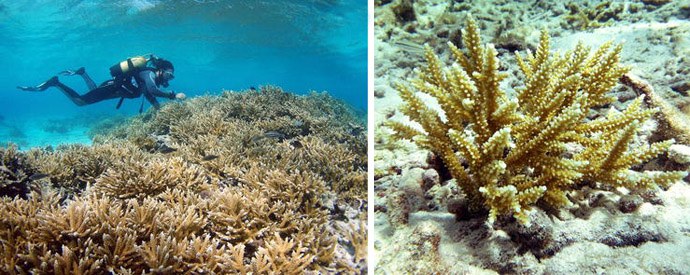Acropora prolifera is a neat Acropora in and of itself. Genetic analysis shows us that it is a hybrid between the only other two Acroporids in the Atlantic, A.cervicornis (Staghorn Acropora) and A.palmata (Elkhorn Acropora). Sure enough, it exhibits physical features of both.
It’s an uncommon species, so scientists were surprised to discover a high-density stand of A.prolifera at the Bay of Grand Cul-de-Sac (Lower Antilles, Caribbean). What’s more surprising is that no A.prolifera were observed at this same reef site in a previous 2011 survey. Genetic microsatellite analyses suggests that the entire new reef is a clone of a single specimen. In a little over two years, a single Acropora colony proliferated like wildfire, earning its name Acropora prolifera.

There have been some positive signs for Caribbean reefs. The late 1990s and early 2000s were harsh for Atlantic coral reefs due to several causes, some of which were anthropogenic (man-caused). For example, researchers discovered the cause of White Pox disease – a disease that wiped out 88% of Elkhorn Coral, Acropora palmata – was a bacteria found in human sewage. After modernizing waste management and water treatment facilities around affected areas, Elkhorn Coral began to rebound.
The discovery of this Acropora prolifera reef is another cause for (careful) optimism.
Journal Reference: http://link.springer.com/article/10.1007/s00338-014-1169-7/fulltext.html











0 Comments